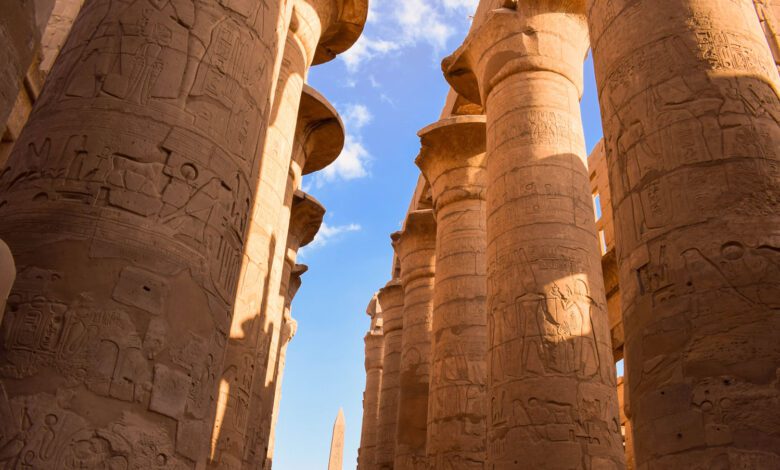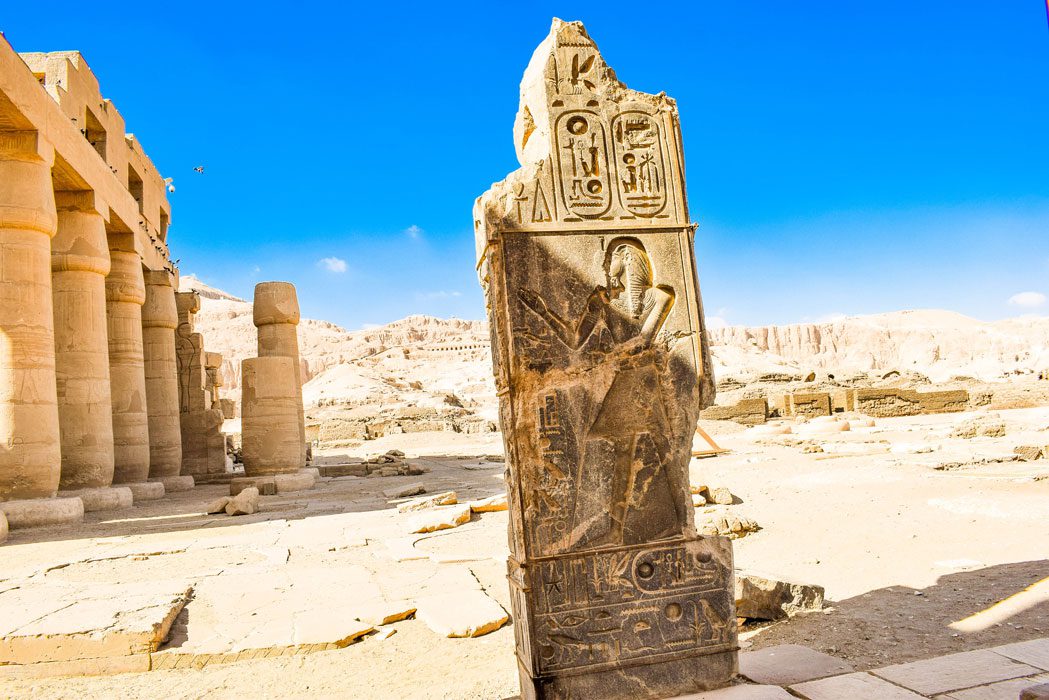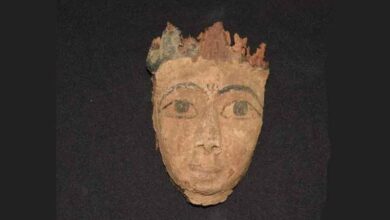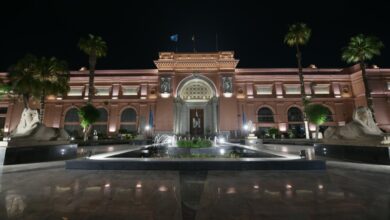
Luxor, once an Ancient Egyptian capital, is known today as the world’s greatest open-air museum and Touristic City. From the tomb of Tutankhamen in the Valley of the Kings and the magnificent sunset views at the majestic temple complexes of Karnak and Luxor to the exciting and fun Nile cruises.
History of Luxor
The old capital of Egypt, Thebes, was on the West bank of the Nile. That is where most of the ruins and tombs are.
The modern city of Luxor is on the East bank. That area has train and bus stations, most of the hotels and restaurants, some museums, tourist shops, and so on. Most visitors (and almost all tour groups) stay on the East bank and travel across the tourist sites but, in recent years, there has been an increase in hotels on the West Bank and many independent travelers stay there.
The ancient city of Thebes
Luxor was the ancient city of Thebes, the great capital of (Upper) Egypt during the New Kingdom, and the glorious city of Amun, later to become the god Amun-Ra. The city was regarded in the Ancient Egyptian texts as was.t (approximate pronunciation: “Waset”), which meant “city of the sceptre”, and later in Demotic Egyptian as ta jpt (conventionally pronounced as “ta ipet” and meaning “the shrine/temple”, referring to the jpt-swt, the temple now know by its Arabic name, Karnak, meaning “fortified village”), which the Greeks adapted as Thebai and the Romans after them Thebae.
Thebes was also known as “the city of the 100 gates”, sometimes being called “southern Heliopolis” (‘Iunu-shemaa’ in Ancient Egyptian), to distinguish it from the city of Iunu or Heliopolis, the main place of worship for the god Ra in the north. It was also often referred to as niw.t, which simply means “city”, and was one of only three cities in Egypt for which this noun was used (the other two were Memphis and Heliopolis); it was also called niw.t rst, “southern city”, as the southernmost of them.
Capital of Ancient World
The importance of the city started as early as the 11th Dynasty when the town grew into a thriving city. Montuhotep II who united Egypt after the troubles of the first intermediate period brought stability to the lands as the city grew in stature. The Pharaohs of the New Kingdom in their expeditions to Kush, in today’s northern Sudan, and to the lands f Canaan, Phoenicia and Syria saw the city accumulate great wealth and rose to prominence, even on a world scale. Thebes played a major role in expelling the invading forces of the Hyksos from Upper Egypt, and from the time of the 18th Dynasty to the 20th Dynasty, the city had risen as the political, religious and military capital of Ancient Egypt.
The city attracted peoples such as the Babylonians, Mitanni, the Hittites of Anatolia (modern-day Turkey), the Canaanites of Ugarit, the Phoenicians of Byblos and Tyre, the Minoans from the island of Crete. A Hittite prince from Anatolia even came to marry with the widow of Tutankhamun, Ankhesenamun. The political and military importance of the city, however, faded during the Late Period, with Thebes being replaced as political capital by several cities in Northern Egypt, such as Bubastis, Sais, and finally Alexandria.
City of Ancient Religious Capital
However, as the city of the god Amun-Ra, Thebes remained the religious capital of Egypt until the Greek period. The main god of the city was Amun, who was worshipped together with his wife, the Goddess Mut, and their son Khonsu, the God of the moon. With the rise of Thebes as the foremost city of Egypt, the local god Amon rose in importance as well and became linked to the sun god Ra, thus creating the new ‘king of gods’ Amon-Ra. His great temple, at Karnak just north of Thebes, was the most important temple of Egypt right until the end of antiquity.
Later, the city was attacked by Assyrian emperor Assurbanipal who installed a new prince on the throne, Psamtik I. The city of Thebes was in ruins and fell insignificance. However, Alexander the Great did arrive at the temple of Amun, where the statue of the god was transferred from Karnak during the Opet Festival, the great religious feast. Thebes remained a site of spirituality up to the Christian era and attracted numerous Christian monks in the Roman Empire who established monasteries amidst several ancient monuments including the temple of Hatshepsut, now called Deir el-Bahri (“the northern monastery”).

What to see in Luxor
Geographically Luxor is divided by the Great River Nile. East Bank and West Bank. Most of the Hotels, airports, Railway stations, and Transport stations are Situated on the East bank of Luxor.
East bank
- Luxor Temple
- Luxor International Airport
- Karnak Temple
- Luxor Museum
- Mummification Museum
- Winter Palace Hotel
- Luxor University
- Local Bazar Papyrus Bazar
West bank
- Valley of the Kings
- Valley of the Queens
- Medinet Habu (memorial temple of Ramesses III)
- The Ramesseum (memorial temple of Ramesses II)
- Deir el-Medina (workers’ village)
- Tombs of the Nobles
- Deir el-Bahari (Mortuary Temple of Hatshepsut, etc.)
- Malkata (palace of Amenophis III)
- Colossi of Memnon (memorial temple of Amenophis III) Al-Asasif cemetery
What to Do in Luxor
- Walk from the Valley of the Queens across the desert and over the cliffs to the Valley of the Kings
- Hire a bike and ride around Ancient Thebes
- Hot Air Ballon
- A local felucca ride just before sunset.
- Hire Horse Carriage and Travel Around the city of Luxor. Cost around 1 USD per hour.
- Take a felucca cruise on the Nile for a 2-day trip to Aswan (the reverse trip is recommended, however, due to river currents).
- Hire a donkey, horse, or camel to ride around Luxor’s West Bank. Go to Pharaoh’s Stables, just a short walk from the ferry terminal. They will take you to places where the big coaches can’t go, so you can enjoy real Egypt, with its friendly people and relaxed lifestyle. Every day is different when you see the West Bank by horse or donkey, and the guides will look after you all the way. They have horses for beginners to experienced riders. The Sunset ride and Nile ride are a must-do.
What to Eat in Luxor
- Your main course may include meat or poultry, or regional dishes such as pigeon or rabbit. Fresh fish Items
- Traditional Egyptian Dishes it’s never hard to find reasonably well-executed Western food.
- International Chain Fastfood Like KFC, Mcdonald’s, and pizza hut are available around the clock
Halal Food
- All food is Halal (strict rules)
- Regularly Monitored by Authority
Vegetarian Food
- Luxor is a vegetarian paradise with lots of fresh seasonal vegetables such as tomatoes and cucumber.
- A lot of Egyptian dishes are basically vegetarians food
Drink Option
- There is a number of places in Luxor to buy alcohol.
- Street Shops are a lot Cheaper than Hotel
- About Every Five start hotels has a Luxury bar.
- Drink in the Street or open public area is not a good option
Costing information
- Luxor is a Real Tourist City, you will find a camp bed to world-class 5-star Executive suits
- All tourist Area is safe for living. because Egyptian authority is very keen to protect tourist
- A paradise for Backpacker Travelers you will find a clean room even 5 USD per night
- If you know then Luxor is a very cost-effective tourist city
- Food and transportation is very cheap
- Luxor Also offers world Class elegant tourist services
- Please check the ticket price Before you go.
Safety Information
- Luxor is a safe city for travel alone (male or female)
- Luxor Local police are very active to protect tourists and friendly
- Most Hotel Equipt with a medical facility
- Locals are very welcoming people
- Public and Private Hospitals are ready to face any emergency.
- Hotels are very safe (You must ensure Government Certificate)
How to go to Luxor
From Cairo To Luxor (1 Way or Round Trip)
- Domestic Flight (1 Hour Duration)
- Luxury Bus (10 Hours Duration)
- Train ( 1Night Duration)
- Luxury Cruise Ship (3 Days Duration) Rented Private Car (10 Hours Duration)
Direct International Flight
- A lot of International Airlines Land at Luxor International Airport
- Directly. Most of the Direct Flights are coming from Europe and China.
- About all Egyptian International Airlines offer Suitable connecting Flights to Luxor.
Intercity Transportation
- Luxor is well-connected with Other touristic City
- Bus, Local Microbus and Train are always available round the clock
- From Harguda you can travel by bus to Luxor
Geographical Information
- Elevation: 76 m
- DMS : 25° 41′ 0″ N, 32° 39′ 0″ E
- Decimal :25.683333, 32.65
- Area Telephone code: (+20) 95
- Google Map : https://goo.gl/maps/83wQGHVEGEJpaY73A
Climate Information
Luxor has a hot desert climate like the rest of Egypt. Aswan and Luxor have the hottest summer days of any other city in Egypt. Aswan and Luxor have nearly the same climate. Luxor is one of the sunniest and driest cities in the world. Average high temperatures are above 40 °C (104 °F) during summer (June, July, August) During the coldest month of the year, average high temperatures remain above 22 °C (71.6 °F) while average low temperatures remain above 5 °C (41 °F).
The climate of Luxor has precipitation levels lower than even most other places in the Sahara, with less than 1 mm (0.04 in) of average annual precipitation. The desert city is one of the driest ones in the world, and rainfall does not occur every year. The air in Luxor is more humid than Aswan but still very dry. There is an average relative humidity of 39.9%, with a maximum mean of 57% during winter and a minimum mean of 27% during summer.
The climate of Luxor is extremely clear, bright and sunny yearround, in all seasons, with a low seasonal variation, with about some 4,000 hours of annual sunshine, very close of the maximum theoretical sunshine duration.




